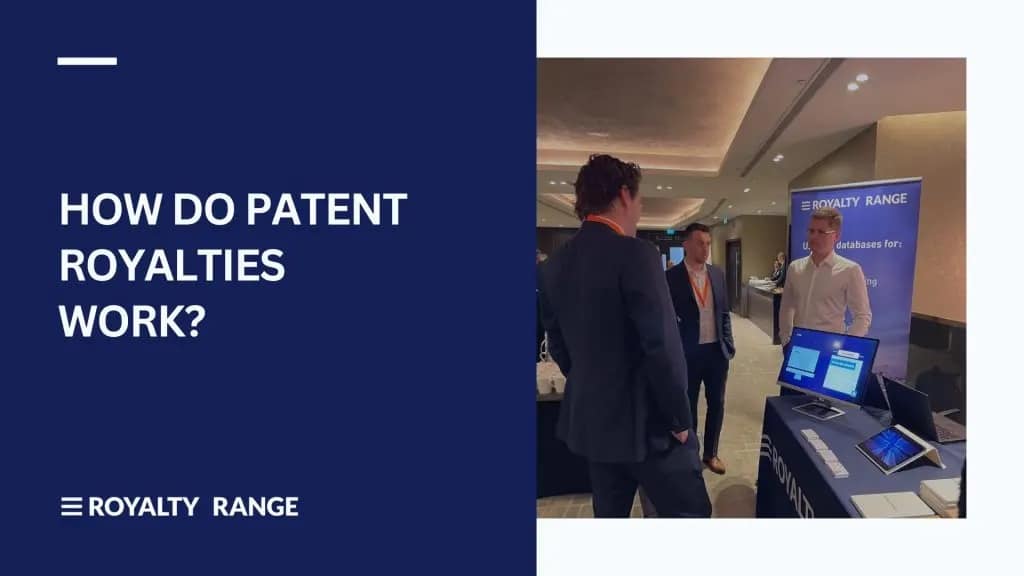Understanding patent royalties
August 16, 2023

Understanding patent royalties is not only crucial for anyone licensing an owned patent to another person or business – it’s also useful to transfer pricing professionals tasked with setting fair rates for intra-company patent royalties, where one entity is using patented IP belonging to another entity within the organization.
In this article, we’ll take a look at:
– What patent royalties are and how they work
– How patent royalties fit into transfer pricing
– Some common questions about patent royalties
What are patent royalties?
In most countries, any intangible assets, whether owned by a company or individual, can be legally protected from use without consent via a patent. In the US, for example, intellectual property can be protected through the US Patent and Trademark Office, while in the UK the Intellectual Property Office (IPO) handles all patent requests. A patent gives an inventor exclusive right to their invention, which could be a process, design, or physical invention like a machine.
If a third party wants to use patented property for whatever reason, they must pay patent royalties to the owner of the IP. These are usually a percentage of the revenue generated by the patent, though licensors may agree to a fixed fee. Once both parties agree on patent royalty rates, they sign a patent royalty agreement. The agreement also clarifies how, when, and where the licensee can use the patent.
Setting patent royalty rates
Several factors can affect patent licensing royalty rates, including:
– Whether the licensee has paid any compensation upfront
– The stage that the patent is at
– The market potential of the patented invention
– The industry concerned
– The size of the market
– The level of competition in that market
– The exclusivity of the patent license
– How unique the invention is
When deciding on fair royalty rates, all the above factors must be considered,
regardless of whether it is for setting royalty rates for a license agreement, valuing a patent, or transfer pricing analysis.
Licensing professionals typically use one of three methods to work out rates for a patent:
1. The income approach: Bases the rate on an estimate of how much income
the patent will generate.
2. The market approach: Bases the rate on comparable rates within the same
market.
3. The cost approach: Bases the rate on working out the cost of producing a
similar patented asset.
Once you have your calculations, it’s recommended that you compare and contrast the results with comparable market rates, like those found in the RoyaltyRange royalty rates database.
Kris Rudzika, Managing Partner at RoyaltyRange, says: “When determining royalty rates, the importance of accurate data can’t be understated. The RoyaltyRange databases are some of the most comprehensive available, and are relied on by transfer pricing professionals and tax authorities worldwide.”
Patent royalties in transfer pricing
For anyone carrying out a transfer pricing analysis for a transaction involving
intellectual property patents, third-party royalty rates data can inform your
calculations. Royalty rates set for comparable uncontrolled transactions are useful for helping you to work out if the transfer pricing is at arm’s length.
The arm’s length principle is described in Article 9 of the OECD Model Tax
Convention:
“[Where] conditions are made or imposed between the two [associated] enterprises in their commercial or financial relations which differ from those which would be made between independent enterprises, then any profits which would, but for those conditions, have accrued to one of the enterprises, but, by reason of those conditions, have not so accrued, may be included in the profits of that enterprise and taxed accordingly.”
There are five primary methods for determining arm’s length transfer prices. These are:
1. The comparable uncontrolled price method (CUP method)
2. The resale price method
3. The cost-plus method
4. The transactional net margin method (TNMM)
5. The transactional profit split method
Whichever method you decide on, all the third-party royalty rates you need can be found in the RoyaltyRange royalty rates database.
Documentation requirements for transfer pricing compliance related to patent
royalties vary from country to country. However, many countries follow guidelines provided by the Organization for Economic Co-operation and Development (OECD) in their Transfer Pricing Guidelines for Multinational Enterprises and Tax Administrations. Common requirements include:
1. A transfer pricing documentation report: Includes a detailed analysis of the controlled transactions, comparability analysis, and the selection and
application of the appropriate transfer pricing method.
2. Functional analysis: Identifies and analyses the functions, assets, and risks of the parties involved in the patent transaction.
3. Economic analysis: Benchmarks the controlled transaction against
comparable transactions between unrelated parties.
4. Royalty rate determination: Explains the basis for setting the royalty rate and demonstrates that it aligns with market rates.
5. Advanced Pricing Agreement (APA): A binding agreement that
determines the transfer pricing method and sets the arm’s length range for
future transactions.
6. Country-by-Country Reporting (CbCR): Detailed information on global allocation of income, taxes paid, and other indicators of economic activity.
7. Local file and master file: In some countries, the transfer pricing
documentation is divided into a local file and a master file.
8. Legal agreements: Copies of the relevant legal agreements related to the
patent royalties.
9. Comparable company data: Details and analysis of comparable companies
used for benchmarking.
Patent royalty FAQs
Patent royalties can be a complex subject. Here we’ve answered some of the most frequently asked questions, so you can refer back whenever you need to:
Can you earn royalties from a patent?
Yes. If you are the holder of a patent from intellectual property and a third party wishes to license it, you can come to an agreement on royalties owed. This can be as a percentage of money earned through use of the patent, or a fixed fee.
What is a reasonable royalty rate for a patent?
A reasonable royalty rate for a patent will depend on a number of circumstantial factors, such as the industry, the level of competition, and how unique the invention is. Our benchmarking studies can be a useful point of reference when deciding what’s fair in your situation.
Are patent royalties taxable?
As with any other business income, patent royalties count towards annual revenue and you will need to pay tax on your earnings.
Get access to the latest patent royalty rates and other premium-quality data
Determining royalty rates is much more straightforward when you have something to base them on. RoyaltyRange can source the latest royalty rate data from patent licensing agreements across hundreds of industries, markets and product types. Just tell us the data that you’re looking for and we’ll get back to you with a concise, easily digestible report. You can opt for one of two services:
● A royalty rates report:
Also known as our One Search service, you tell us your search criteria and
we’ll conduct a one-off search on your behalf.
● A benchmarking study:
With your search criteria as our starting point, we’ll produce a comparison of
comparable agreements, including the median average and interquartile
range.
Multinational enterprises, global consulting companies, international law firms and tax authorities around the globe rely on our databases and tools. Whether you’re negotiating patent royalty rates for a license agreement, valuing a patented product, or analyzing an intercompany transaction for transfer pricing purposes, this kind of information can be invaluable. Get in touch and see how we can help.
The information provided below is for general informational purposes only and should not be construed as legal or tax advice. It is not a substitute for consulting with a qualified legal or tax professional.




